DDR3 Memory
DDR2 moved the "notch" to a different location so DDR2 could not be mounted in a DDR slot by accident, and vice versa. DDR3 provides a third notch configuration, designed to prevent mounting in older DDR and DDR2 slots.
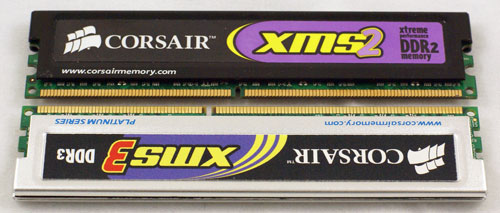
The first DDR3 memory to show up in our labs is from Wintec, who will market the DDR3 kit under their AmpX brand name.
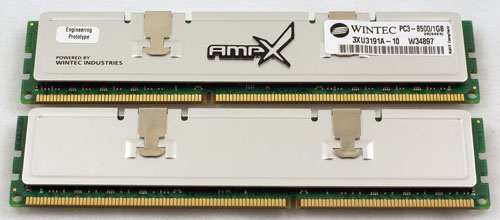
Corsair has also been at the forefront of DDR3 development and provided a Corsair 2 GB DDR3 kit for evaluation.

Both the Wintec and Corsair parts are rated at DDR3-1066 at 7-7-7-20 timings. Corsair also has a 1333 part that should be released in the next two weeks. We will follow up with that 1333 rated memory as soon as it is available.

DDR2 memory was also needed for the older P965 and new P35-based ASUS P5K Deluxe. Corsair Dominator DDR2-1111 was chosen for the wide range of available DDR2 memory speeds and the excellent timings available at DDR2-800 and DDR2-1067.
P35 Motherboards
Since the primary goal was to compare DDR2 and DDR3 performance it was important to find P35 motherboards that supported DDR2 and DDR3 in as similar a configuration as possible. ASUS will be marketing a pair of premium motherboards that differ only in the memory each motherboard supports.
The ASUS P5K3 Deluxe is powered by the Intel P35 chipset and fully supports DDR3 memory to an official DDR3-1333 speed.
The ASUS P5K Deluxe is based on the same P35 chipset but supports DDR2 memory. There are other minor differences in the two boards, but they are basically the same board supporting different memory types. This is exactly the configuration needed for our comparison.
For comparison to a current Intel chipset, the ASUS P5B Deluxe was used.
This excellent motherboard received the Gold Editors' Choice in the conclusion to our recent P965 motherboard roundup. It also supports a wide range of memory voltages and speeds which make it ideal for comparison testing to the P35 motherboards.
DDR2 moved the "notch" to a different location so DDR2 could not be mounted in a DDR slot by accident, and vice versa. DDR3 provides a third notch configuration, designed to prevent mounting in older DDR and DDR2 slots.

The first DDR3 memory to show up in our labs is from Wintec, who will market the DDR3 kit under their AmpX brand name.

Corsair has also been at the forefront of DDR3 development and provided a Corsair 2 GB DDR3 kit for evaluation.

Both the Wintec and Corsair parts are rated at DDR3-1066 at 7-7-7-20 timings. Corsair also has a 1333 part that should be released in the next two weeks. We will follow up with that 1333 rated memory as soon as it is available.

DDR2 memory was also needed for the older P965 and new P35-based ASUS P5K Deluxe. Corsair Dominator DDR2-1111 was chosen for the wide range of available DDR2 memory speeds and the excellent timings available at DDR2-800 and DDR2-1067.
P35 Motherboards
Since the primary goal was to compare DDR2 and DDR3 performance it was important to find P35 motherboards that supported DDR2 and DDR3 in as similar a configuration as possible. ASUS will be marketing a pair of premium motherboards that differ only in the memory each motherboard supports.
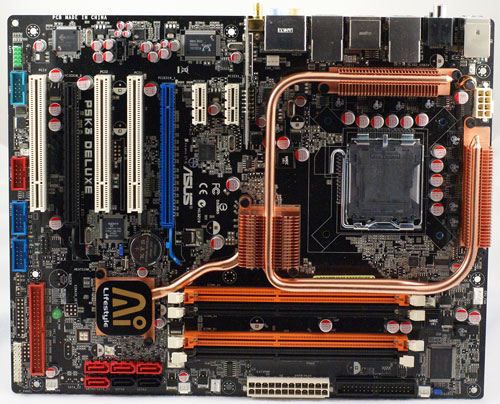 |
| Click to enlarge |
The ASUS P5K3 Deluxe is powered by the Intel P35 chipset and fully supports DDR3 memory to an official DDR3-1333 speed.
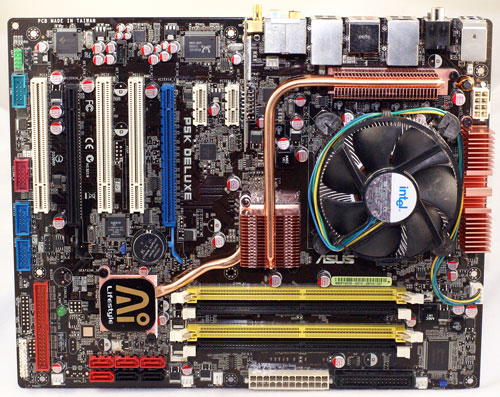 |
| Click to enlarge |
The ASUS P5K Deluxe is based on the same P35 chipset but supports DDR2 memory. There are other minor differences in the two boards, but they are basically the same board supporting different memory types. This is exactly the configuration needed for our comparison.
For comparison to a current Intel chipset, the ASUS P5B Deluxe was used.
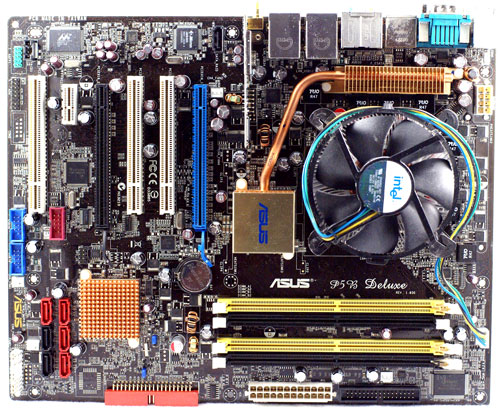 |
| Click to enlarge |
This excellent motherboard received the Gold Editors' Choice in the conclusion to our recent P965 motherboard roundup. It also supports a wide range of memory voltages and speeds which make it ideal for comparison testing to the P35 motherboards.










45 Comments
View All Comments
vaystrem - Tuesday, May 15, 2007 - link
Thank you for your response :)cool - Tuesday, May 15, 2007 - link
What am I missing? How can you have DDR2 800 results for the DDR3 Bearlake mobo?Look at the 3rd row, 4 column of the Sandra benchmarks results on page 5.
TA152H - Tuesday, May 15, 2007 - link
Their chart is a little bit off. It is how they did their best to speed normalize DDR2 and DDR3, so for the DDR2 column for the Bearlake it is DDR2 memory they tested, for the DDR3 version, it is DDR3 memory.It's probably the most useful thing in there, in my opinion. It shows you get extra speed even at the exact same timings, with memory using lower voltage. It's pretty impressive.
cmdrdredd - Tuesday, May 15, 2007 - link
not very impressive to me considering the prices you'll be paying. That's $300 difference between a good DDR2 kit and a DDR3 kit (probably not even high bin or binned at all).TA152H - Tuesday, May 15, 2007 - link
Well, agreed, currently you're not getting much bang for the buck, but that's always the case when new memory comes out. Look at the price of RDRAM, it never got better :P.But, obviously, the prices today mean essentially nothing for the future of the technology, it's just representative of it being a very new technology right now. I'd expect it should be a tiny bit more expensive everything else being equal because some of the additions to it, but it should be insignificant. It's a much cleaner design, and you get some performance on top of it, so I think it's a good technology. I agree, for now, it's difficult to validate the price of it. It's not even like you could say that you're better off getting a DDR3 based design now so you can reuse the RAM. The latencies are so poor on the current stuff you'd probably be aghast at using it a year from now, and you'd probably be able to buy 1 GB of DDR2 today, and 1 GB of DDR3 in a year for less than 1 GB today. So, right now, I don't think it makes much sense to anyone.
Good thing for Intel pushing it though. Anyone that dislikes them needs to recognize how important they are for moving technology forward even at their own cost. Sometimes they've failed though, such as with RDRAM and, so far, EPIC.
Wesley Fink - Tuesday, May 15, 2007 - link
DDR3 will run at DDR3-800 6-6-6-15 timings. We will add this to the DDR-800 5/6-6-6- line to clarify. The point was to run all 3 boards and the two memories at the exact same speed and timings. 800 was the only speed that allowed this.cool - Tuesday, May 15, 2007 - link
Thanks for the explanation, Wesley.I was confused thinking the P5K3 was maybe one of those motherboards that can take 2 types of different RAM, namely DDR2 and DDR3. But that is not the case.
TA152H - Tuesday, May 15, 2007 - link
I see timings of 5/6-6-6-15 and such. What does 5/6 mean? The P965 is running at five and the others at six?Wesley Fink - Tuesday, May 15, 2007 - link
We added this clarification to Page 4 - Memory Test Configuration:"While memory timings were matched to the same memory speed wherever possible, there were a few settings where the chipsets did not allow a direct comparison. DDR3-800 runs at 6-6-6-15 timings. The P965 has options to set 6-6-6-15 timings but the board would not boot under any settings or voltage we fed it at 6-6-6 timings. The closest timings that would work on the P965 at 800 speed were 5-6-6-15. The P5K DDR2 board, based on the P35 chipset, would allow setiing and running 6-6-6-15 timings. This is reflected in our charts with the line ID of 5/6-6-6- for timings. We also tested DDR2 at the fastest timings it could achieve with complete stability on both the P5B Deluxe and P5K Deluxe. This was 3-3-3-9 at DDR2-800 and 4-4-3-11 at DDR2-1066."
TA152H - Tuesday, May 15, 2007 - link
That's clear, I think that will remove any questions relating to the charts.